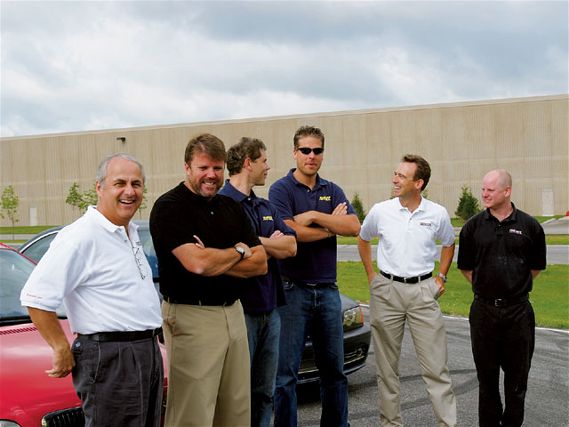 | Feild And Tire Test - Conclusions - Tuner Tech
| Feild And Tire Test - Conclusions - Tuner Tech
There are several conclusions to be drawn here. Firstly, Will Turner and Don Salama are damn fine drivers with exceptional consistency and analytical skills, so check out the Grand-Am Cup and Speed World Challenge for updates on the team, or go to www.tmsracing.com.
As for the tires, we can conclude several things, but you should first decide what you want from a tire. If you live in SoCal and don't see rain all year, you could simply ignore the wet performance and go for the tires that perform best in the dry (and that's pretty much all the tires, as there was very little difference between them in the dry) and are within your price range. In fact, there really wasn't a bad tire among them from this point of view. But, if you live somewhere like Seattle, you might want to concentrate on wet weather ability, where the differences were greater. To be more precise, the difference between the best and worst tires in the dry was about 1.3 seconds, whereas the gap increased to 2.8 seconds in the wet. This means those blessed with low rainfall can base their choice on price because all are pretty competitive, while those who regularly encounter wet roads should really study the data and make a careful selection - although we'd advise you to get the best you can afford for the sake of your loved ones.
Obviously, our test hasn't considered important elements such as tire wear. That's because it's impractical in the time allotted to drive thousands of miles and measure the wear. And with each tire only completing a relatively small number of timed laps and braking tests, we hadn't really covered enough mileage to make it count. Admittedly, we could see some tires were wearing faster, but this might have been because they ran greater distances, so we chose to ignore this element.
We haven't considered road noise either. Our drivers commented that some tires sounded different, but with no real means to measure the difference empirically, we also ignored this factor.
We've tried to include data on each tire such as traction rating, molded tread depth, and tread type, since all these factors can have a bearing on the results. How they work is something of a black science and not easily explained in the space allotted, nor is it always consistent. However, it can be said that tires with AA traction ratings should do well in the wet. You can also expect the asymmetric tread patterns to do better than the direc-tional ones in this instance, simply because the depth of water on the track didn't really merit the added advantage of a directional tread pattern. As for tire compound, that affects how the tire deforms under loading, and to an extent, the lap times illustrate that.
Admittedly, there are many factors we've overlooked, but we hope our test has provided you with important information about grip and wet weather performance. As you can see, the difference between the 12 test tires was small in the dry but considerable in the wet, making that choice far more complicated. Anyway, it's time for us to shut up and for you to make some decisions. Good luck.
Point Scoring
Rather than develop an excessively elaborate points system to discover the best performers, we created a simple 12-point system. For each event, the first place tire received 12 points, and the last-place tire got one. So the tire with the most points won. The only provisos to this are that this system exaggerates what are actually small differences and that are you should consider your requirements and budget before making a final decision, as previously stated.
